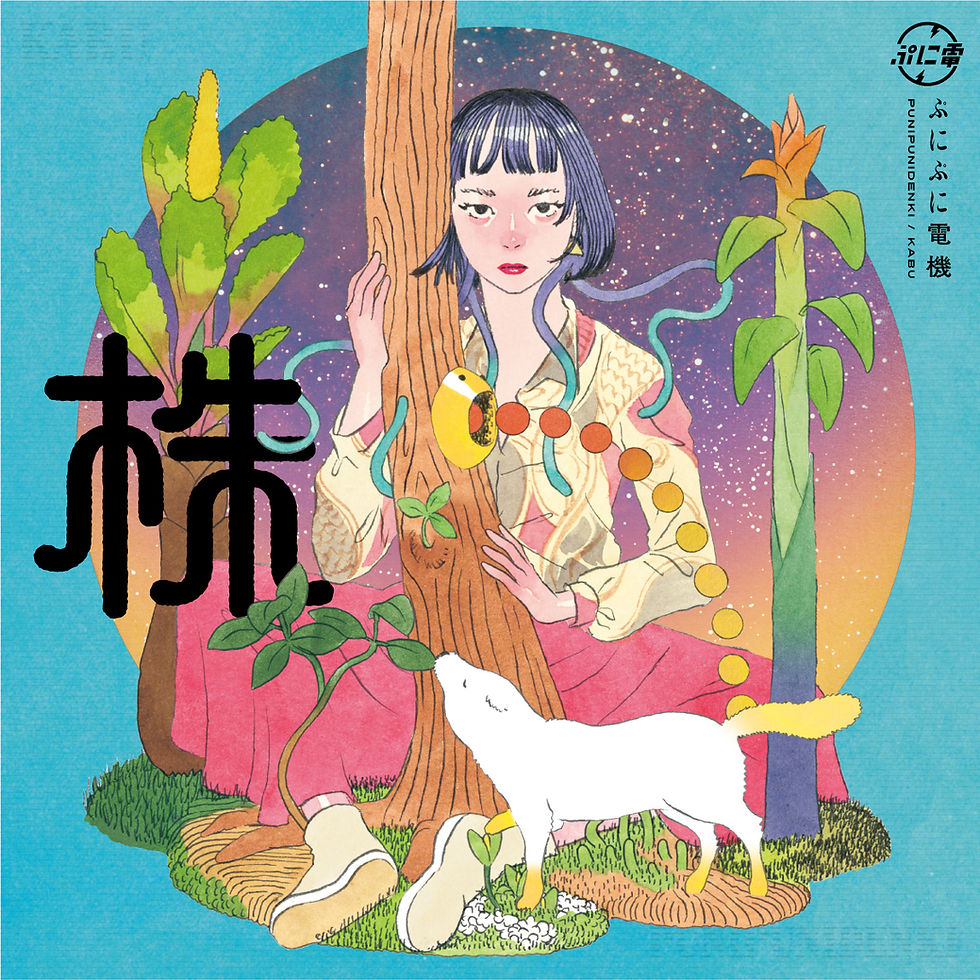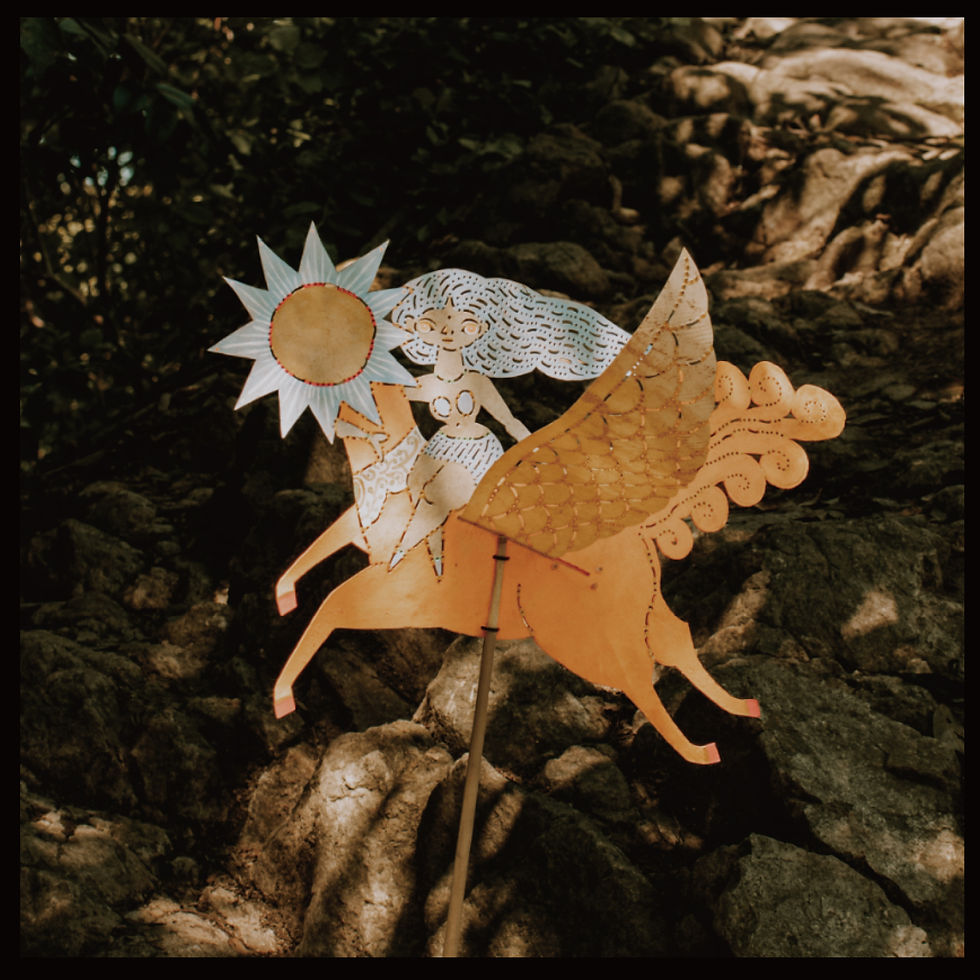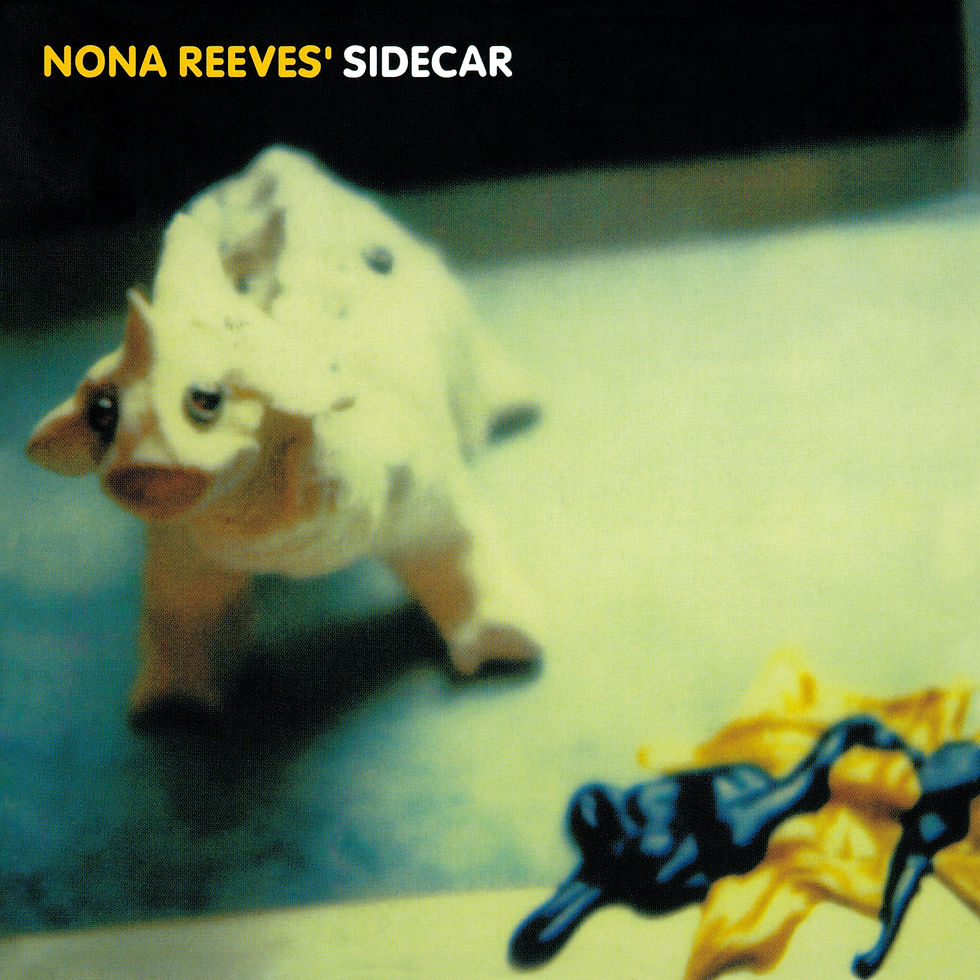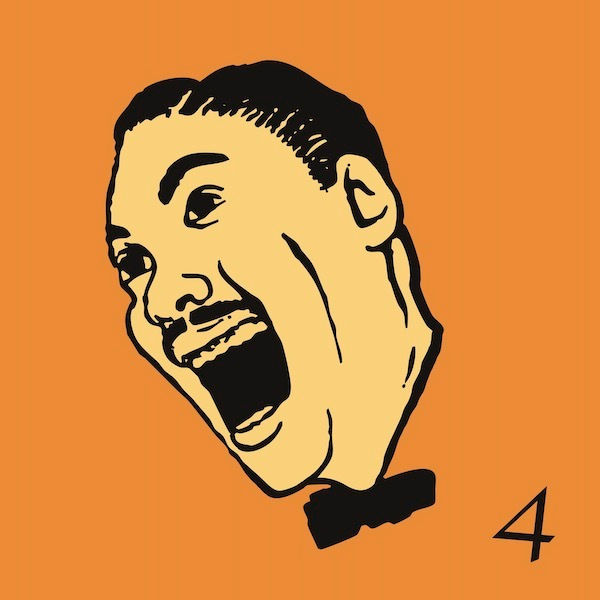[Description]
The Naked Lilies' precious collection of recordings capturing the fresh and vivid essence of their early band formation years, titled '67-'69 STUDIO et LIVE, originally released in August '91, is now being reissued with two unreleased bonus tracks!
Note:
Please note that this product is available for purchase only to customers residing in Japan and the Asia region. please read the description on the right side of this page.
This eagerly awaited re-release features the addition of two previously unreleased tracks, along with the latest remastering, encapsulating the electric guitar feedback that would go on to define their future direction, despite being recordings from their formative years.
67-‘69 STUDIO et LIVE Liner Notes
This is a reissue of ’67-‘69 STUDIO et LIVE, originally released in August, 1991. It includes rare recordings from the earliest period of Les Rallizes Dénudés. The track selection and editing were overseen by Takashi Mizutani. For this reissue, the audio was remastered by one-time Rallizes member Makoto Kubota, using the best available sources. The CD version contains two bonus tracks that were newly discovered through this process.
In fall 1967, Takashi Mizutani and Takeshi Nakamura, two colleagues from Doshisha University’s Light Music Club, made the decision to form a band. Nakamura is said to have approached Mizutani with the idea. Mizutani had exceptionally long hair for the time, and is said to have exuded a distinct aura. Since they both played guitar, they figured they needed to find a bass player. That said, it wasn’t about holding an audition. They were looking for someone who looked the part, someone who vibed with them instinctually. That search led to Moriaki Wakabayashi, who at the time was a fellow student at Doshisha University.
“Let’s start a band that would revolutionize Japan’s music scene,” they said, according to Wakabayashi in an interview published by BuzzFeed Japan (October 2017; interviewed by Ryosuke Kamba).
The three hit it off immediately. Wakabayashi said Mizutani and Nakamura approached him right around the time he learned of the 10/8 Haneda Struggle, and was getting ready to confront society head on. “10/8” refers to the incident in which a crowd of approximately 2,500, mostly university students, gathered around Haneda Airport in protest against any official visits by Japan to Southeast Asia and Oceanian countries, including the planned state visit to South Vietnam by then-Prime Minister Eisaku Sato. A police force numbering 2,000 clashed against the protestors, and the unrest resulted in the death of a Kyoto University student. It was a time when distrust of the government was increasing, and the protest movement against the Vietnam War was growing day by day. This would lead to the development of the Zenkyōtō (All-Campus Joint Struggle League) movement.
In various cities around the globe, protests concerning fundamental rights were becoming a daily occurrence. Political activism and cultural activities were happening concurrently. People took their opposition to the tenets of the older generation and authority figures and turned it into actions and works of art. That movement, the culture of spontaneous opposition, and counterculture, were growing rapidly around the world, especially between 1967-1968. Literature, art, music, film—various shifts could be observed across all media.
In January 1968, the unilateral firing of Cinémathèque Française director Henry Langlois by then-culture minister André Malraux sparked an uproar among the French cineaste, with filmmakers withdrawing their works from screenings and banding together in intense protest. The Langlois Affair, as these events came to be known, can be seen as a precursor to such movements mentioned above. Four months later, the intensifying protests among students in Paris would lead to a general strike across France and then the May 68 revolution. Some joined anti-war protests, some became involved with the political struggle, some became active in environmental conservation, some participated in art or sound performance activism, some used street theater as a means of demonstration. Each individual threw themselves into their own form of protest.
It can be said that Les Rallizes Dénudés formed as a response to such tremors felt around the globe.
Wakabayashi may have gotten along with Mizutani and Nakamura, but he had no prior experience playing an instrument. According to Nakamura, “From the beginning, ideas and sensibilities were more important than instrumental technique.” Mizutani must have felt the same way. When the three got high and wandered around Kyoto, they came up with the name Rallizes. “Hadaka” (meaning “naked”) referred to their lack of affectations, and contrary to rumors it had nothing to do with William Burroughs’s Naked Lunch, according to Wakabayashi.
Drum duties fell to Takashi Kato, a high school friend who played jazz drums. They began practicing at a warehouse in Kusatsu, Shiga Prefecture. They had no originals at first, so they honed their skills by playing songs like “Tobacco Road.” That the Rallizes based their take on the wilder Blues Magoos version, and not the hit version by the Nashville Teens, speaks to the band’s idiosyncratic approach. Included as a bonus track on the CD version of this reissue is a recording of that song, as performed by a lineup of Mizutani, Nakamura, Wakabayashi, and Kato. This is believed to be the earliest recording by the original band. Wakabayashi left the band in early summer 1968 as he committed himself to political causes, which would mean that this recording must be from spring of the same year.
According to Wakabayashi, the Rallizes’s first show was at a dance party for Doshisha University’s photography club. Referral for the event came from the woman who shot the photo that would become the cover for ‘67-’69 STUDIO et LIVE. They still did not have any original songs at this point, which could mean that it was spring 1968, at the time of the May Revolution.
Around this time Wakabayashi could sometimes be seen on stage singing the Rolling Stones’ “As Tears Go By.” Even after his departure from the band, Wakabayashi would often come to see Mizutani and the others on campus or at their regular haunt, the jazz kissa Champ Clair.
“Smokin’ Cigarette Blues,” as heard on this disc, was recorded live at Doshisha University’s campus festival in fall 1968. One of Doshisha’s large classrooms, typically used for general education courses, served as the venue. The roaring sound filled every inch of the dim space. It features Mizutani and Kato, with Nakamura on bass. It’s a total improvisation, and Mizutani’s guitar can be heard growling.
It’s a performance that strongly illustrates these words: “The moment Mizutani’s electric guitar began feeding back, our path had been decided.” (Mizutani’s own words from a fax interview originally published in Music Magazine, November 1991).
Which tells me that just one year after the band’s formation, the foundation of the band’s sound for the next 30 years was already in place. Was there any other band in Japan who played like this in the fall of 1968? The second half of this track features a harmonica. This was played by Wakabayashi, who had hopped on stage for a spontaneous reunion with the band.
Mizutani was involved with Doshisha’s poetry society. He had been writing poetry since before the band’s formation. Upon Wakabayashi’s departure and Takashi Tada joining on bass, original songs began to take shape.
Gendai Gekijo (meaning Modern Theater), the only underground theater troupe in Kyoto, had a close relationship with LRD. The Ralizes didn’t just provide accompaniment for the stage; the band and the troupe shared something of a common struggle. Gendai Gekijo had been involved with various forms of light art since spring 1967, incorporating strobe lights, black lights, and mirror balls in their performances. Their relationship with Gendai Gekijo may have contributed to the prevalent use of light art in the Rallizes stage shows.
Gendai Gekijo was founded in December 1962 by Tatsuo Komatsu. Aside from theater performances, Komatsu was involved with various art events throughout the decade. He was a poet, stage director, composer, and even a pantomime performer. Komatsu rejected the establishment institutions of drama and theater, and was known for incorporating elements of “happenings” into stage productions. To that end, they certainly would have felt a kinship with the Rallizes, whose spontaneity was considered one of their strong points.
“Rather than limit our activities to the theatrical discipline, we aim to align ourselves with a wide range of fields such as cinema, music, Butoh, and visual art, and create a true multidisciplinary art form, filtered through the mutual conflicts that arise in between.” [from “Haru No Shura: An Introduction to Tatsuo Komatsu” by Yoshirou Ohta, published in Yume Wa Kouya Wo: A Tatsuo Komatsu Memorial Collection, Sunlead, 1987]
Collaborations with Gendai Gekijo included an event in November 1968 at the Play Spot Kyoto, where the Rallizes earned a warm response accompanying Masashi Yanagisawa’s film PARODY もしくは薔薇十字団の幻想 (Parody, or the Vision of Rosicrucianism).
On April 12, 1969, LRD appeared in “Barricade-A-Go-Go,” an event held inside a classroom at Kyoto University while its campus was barricaded with a fence. This was one of the so-called “Barri-Fests,” which had Komatsu in charge of administrative duties. The following is how Komatsu recalled these “Barri-Fests”:
“The Rallizes would sing; before they knew it the curious posers nervously entering the barricades would start dancing furiously; get busted for an obscenity crime; Ichiro Araki, newly released on bail, singing with a guitar in hand; private film screenings; ongoing happenings conducted by artist troupes such as “Play” or “Zero Jigen”; and finally the Yamato hippie group known as the Buzoku would descend upon; what’s going on, there are two men kissing, what does this have to do with the common struggle? Sectarians with a hint of common sense would be greatly critical of what we were doing. (However, this is important). [Shiteki ‘Seibu Kodo’ Shoushi by Tatsuo Komatsu]
Continuing onto April 26, an event dubbed “Menzaifu To Shiteno Recital” (“Recital for a Pardon”) was held at Rittai Garou Iteza (“Art Gallery Sagittarius”) in Sanjo Kiyamachi, Kyoto. Planning and production were handled by Komatsu. Rittai Garou Iteza was the first gallery in Kyoto specializing in modern art. At the time, in 1969, it was one the preeminent spaces not only in Kyoto, but in all of Japan, where valuable works of modern art could be introduced. On October 18, “Menzaifu To Shiteno Recital No. 2” was held at the Education & Culture Center of Kyoto. Drums were handled this time by Tsutomu Matsumoto. Makoto Kubota, who was in attendance at this performance, was shocked by the sheer volume at which Hadaka No Rallizes played. “It was my first-ever experience hearing anything that loud,” he later recalled.
“La Mal Rouge,” as heard on this disc, was recorded on April 26 at Iteza. Its bass line was written by Mizutani. “Vertigo otherwise My Conviction“ and “The Last One” were recorded on the same day, and were performed by a lineup of Mizutani, Kato, and Tada. The shouts you hear on “The Last One” came from Komatsu and Kato. “Résonance,” a bonus track on the CD version, is likely from the same period. “Les Bulles De Savon,” “Memory is Far Way,” and “Bird Calls in the Dusk” were recorded around summer 1969 at Kato’s home. “My Convision (2nd Version)” is from the October 18 event, or was possibly recorded elsewhere for this date. The lineup for these recordings included Mizutani and Tada, with Tsutomu Matsumoto on drums.
For “Bird Calls in the Dusk,” Tada played lead guitar at the behest of Mizutani’s request to “express the sound of bird calls with the guitar.” At the time, Mizutani particularly enjoyed listening to free jazz and rock from San Francisco. Among his favorite records was Freak Out! by Frank Zappa and The Mothers of Invention. Mizutani also owned and loved their first two singles released in Japan, “Trouble Comin’ Every Day” and “Motherly Love.” You can hear a kind of connection between “Trouble Comin’ Every Day” and Mizutani’s “Vertigo otherwise My Conviction.“ Tada had also purchased and was listening to Freak Out! at the recommendation of Mizutani. “Memory is Far Away” has Mizutani strumming an electric guitar while playing a kazoo, mounted on a harmonica holder. “That style was very novel,” according to Tada. Where did he get the idea to play the kazoo? It’s possible that the inspiration came from Freak Out! which includes songs like “Hungry Freaks, Daddy,” “Motherly Love,” and “You Are Probably Wondering Why I’m Here,” all of which contain memorable kazoo parts. Mizutani had just begun writing original songs, and he had considerable skills in learning from listening. “Memory is Far Away” and “Bird Calls in the Dusk” would both become a regular part of the Rallizes repertoire for years to come.
“The Last One.” This, precisely, is what Takashi Mizutani, and what Les Rallizes Dénudés, had been searching for. This song, along with its lyrics, melody, and structure, would continue to evolve and be performed throughout the band’s lifetime. Mizutani once explained that “Every instance of ‘The Last One’ exists as part of one continuous song.”
Following their show at Ikenobo Hall in the fall of 1969, Les Rallizes Dénudés would take a hiatus. Takashi Mizutani was 21 years old.
In the aforementioned fax interview, Mizutani responded to a prompt asking what he would like to say to both longtime fans and to those who will be experiencing Les Rallizes Dénudés for the first time (by listening to the newly released CDs):
Even if the times change, I (or even the Rallizes) do not change. Remain in place, and keep moving forward. If there’s a wall between the two parties, let’s just tear it all down.
Even half a century later, Les Rallizes Dénudés remains in place and keeps moving forward. This disc is a testament to that.
July 2022
Manabu Yuasa
Les Rallizes Dénudés/ ’67-’69 STUDIO et LIVE[CD]UBCA-1073
Tracklist
1. Smokin’ Cigarette Blues (Live Version)
2. La Mal Rouge
3. Vertigo otherwise My Conviction
4. Les Bulles de Savon
Soap Bubbles
5. Memory is far away
6. Bird calls in the dusk
7. My Conviction (2nd. Version)
8. The Last One _1969 (Live Version)
-Bonus Track-
9. Résonance #
10. Tobacco Road #
#Unreleased song
Product ID
[CD]
Catalog Number: UBCA-1073
Released by: The Last One Musique / Tuff Beats
Release Date: October 12, 2022
Japanese / Asia Exclusive Edition
This is the Japan/Asia exclusive edition. this is available for purchase for only who reside in Japan and Asia.
If you accidentally make a purchase, we will provide a refund, but please note the following two points:
- We cannot refund any fees related to currency exchange included in the billed amount.
- The refund will be processed at the exchange rate on the day of the refund. Due to the aforementioned fees and rate fluctuations, the refunded amount may differ from the original payment amount.
If you residing out of Asia, we would like to introduce a separate distribution, Temporal Drift ( https://temporaldrift.today/ ), the label distributing all except areas we are in charge of.






![Les Rallizes Dénudés/ ’67-’69 STUDIO et LIVE[CD]UBCA-1073](https://static.wixstatic.com/media/cc0d0b_422231e449de4a7cae6e0caae2fde328~mv2.jpg/v1/fill/w_980,h_980,al_c,q_85,usm_0.66_1.00_0.01,enc_avif,quality_auto/cc0d0b_422231e449de4a7cae6e0caae2fde328~mv2.jpg)




















